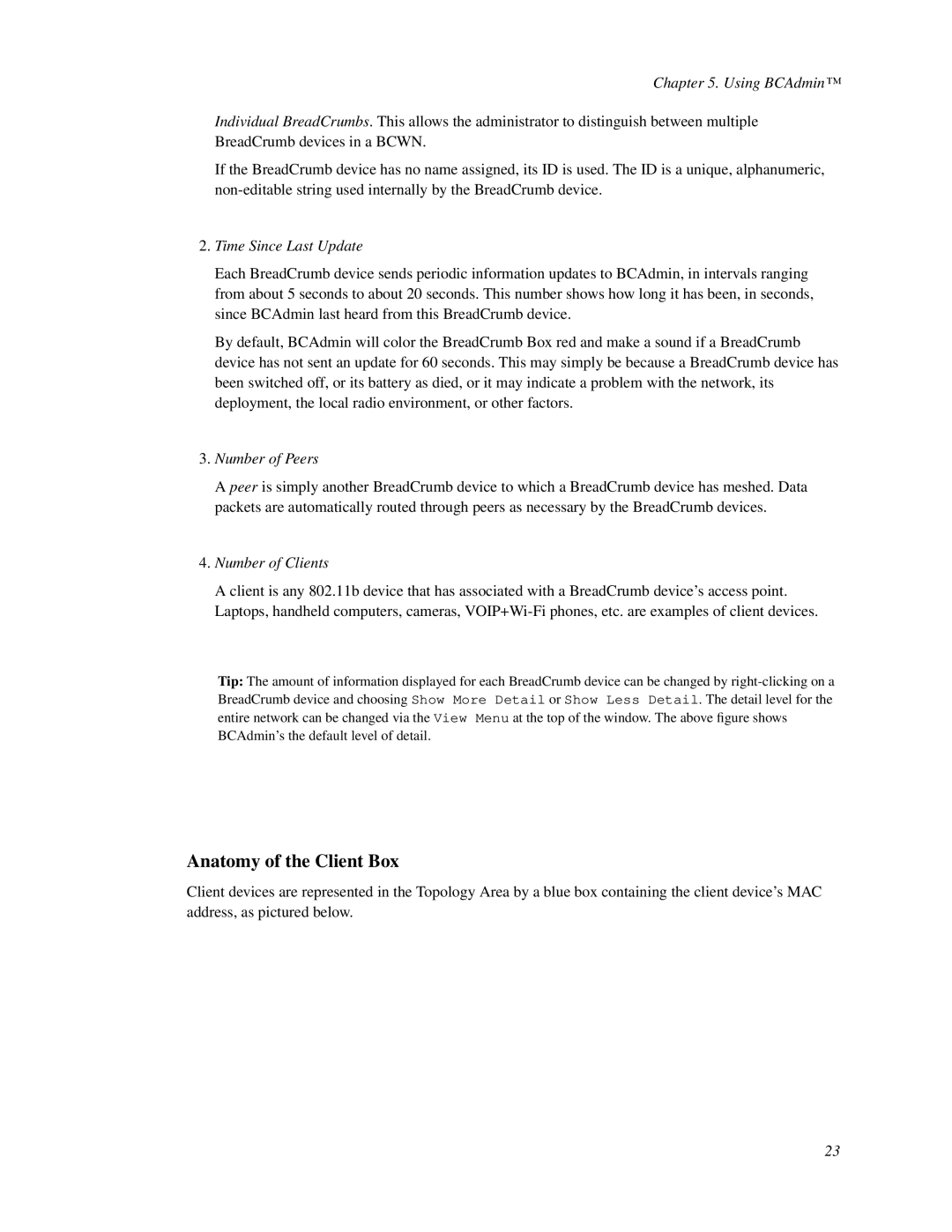Chapter 5. Using BCAdmin™
Individual BreadCrumbs. This allows the administrator to distinguish between multiple BreadCrumb devices in a BCWN.
If the BreadCrumb device has no name assigned, its ID is used. The ID is a unique, alphanumeric,
2.Time Since Last Update
Each BreadCrumb device sends periodic information updates to BCAdmin, in intervals ranging from about 5 seconds to about 20 seconds. This number shows how long it has been, in seconds, since BCAdmin last heard from this BreadCrumb device.
By default, BCAdmin will color the BreadCrumb Box red and make a sound if a BreadCrumb device has not sent an update for 60 seconds. This may simply be because a BreadCrumb device has been switched off, or its battery as died, or it may indicate a problem with the network, its deployment, the local radio environment, or other factors.
3.Number of Peers
A peer is simply another BreadCrumb device to which a BreadCrumb device has meshed. Data packets are automatically routed through peers as necessary by the BreadCrumb devices.
4.Number of Clients
A client is any 802.11b device that has associated with a BreadCrumb device’s access point. Laptops, handheld computers, cameras,
Tip: The amount of information displayed for each BreadCrumb device can be changed by
Anatomy of the Client Box
Client devices are represented in the Topology Area by a blue box containing the client device’s MAC address, as pictured below.
23
